
Some clothes have been considered classic for several generations, right? For example, the ever-dependable leather jacket! Leather has been in fashion for a long time, though it is constantly reinvented.
It is ideal for upholstery, decoration, rugs, and furniture. I believe that everyone interested in interior design adores this material, and how could we not adore it in fashion, in hats, bags, belts, and footwear?
When it comes to dressing, we all have favorite fabrics, and leather has always been one of mine. I believe many of us agree on the strength and drama it adds to looks, as well as how dazzling a good piece of fabric can make you appear. However, several questions arise in addition to its attractiveness. Can leather participate in sustainable fashion? Can we use it if we want to live a healthy and alternative lifestyle? Should I stop buying my favorite leather clothing?
If you’re in the same boat, read on because I’ll tell you about the new alternatives to traditional leather, from vegan and PET-based options to other innovative materials you never thought a fabric could be made with. We will also discuss the hotly debated issue of leather versus non-leather clothing in the fashion world. But first…
Do you want to know a little about the history of leather?

- Leather has been used to make garments since the time of the Cro-Magnon man, who lived in Europe during the Upper Paleolithic Period about 50,000 years ago. People started migrating from the tropics to the northern hemisphere, which was much colder. Prehistoric people first discovered that animal skins could be used to make clothing to protect themselves from cold weather.
- Additionally, there is evidence that women in Sumeria and Mesopotamia wore leather clothing as early as the 5th to 3rd millennia BCE.
- The Ancient Greeks used leather to create sandals and clothing. The leather production soon spread to Egypt and Rome, where it was prized by Pharaohs and Queens and used by foot troops to make armor and protective clothing.
- Native Americans made leather tepees out of oil-tanned animal skins and decorated them with bones, feathers, beads, and porcupine quills. They also drew complex patterns on their clothing.
- During the early 1800s Industrial Revolution, the demand for leather skyrocketed. Leather was required for clothing and footwear, belts that powered the many new machines, and the massive increase in leather goods production. The leather industry has become an integral part of global culture and way of life.
As you can see, leather has been used as a protective material for thousands of years.
Man has utilized animal resources to the greatest extent possible to survive and develop tools that allow him to live better and more easily. Leather shoes, for example, made walking and exploring more comfortable. The fur on leather provided excellent warmth in colder climates. In hotter climates, the skins could provide shade and aid in cooling. Leatherwork was primarily concerned with function.
The use of leather changed as man and society evolved. It would be used to make leather armor, boots, wallets, tents, writing surfaces, harnesses, and jewelry. Leather was regarded as a status symbol in some cultures. At this point, leather craftsmanship was becoming more concerned with function and aesthetics.
Historical fashion trends that feature leather will always remain popular due to their long history. However, designers have continually looked for new and creative ways to showcase the timelessness of this fabric and its versatility. This is when exotic skins such as crocodile, ostrich, and snake skins began to be used, which were very popular but are now totally reprehensible. True creativity, in my opinion, would be achieving the look of leather without killing defenseless animals.
This is why consumers have begun to demand cruelty-free alternatives, such as synthetic leather products, which are significantly less expensive than genuine leather products while still being a durable and versatile material for fashion design.
As earlier stated, skins were used for protection and survival, but we are no longer living in the Stone Age, right? We now have enough technological advances to transform this industry beyond protection, and even aesthetics, and appearance. In response to larger issues such as climate change and work ethic, innovation is revolutionizing the leather industry.
We’ve arrived at the most exciting part: I’ll show you some sustainable materials and evolving trends that respond to the change that we, as consumers, seek. Some of these materials, for example, are made of reassuring perennial plants that are both durable and functional. Others emphasize bright, mood-enhancing colors, but are always motivated by sustainability and lower-impact processes.
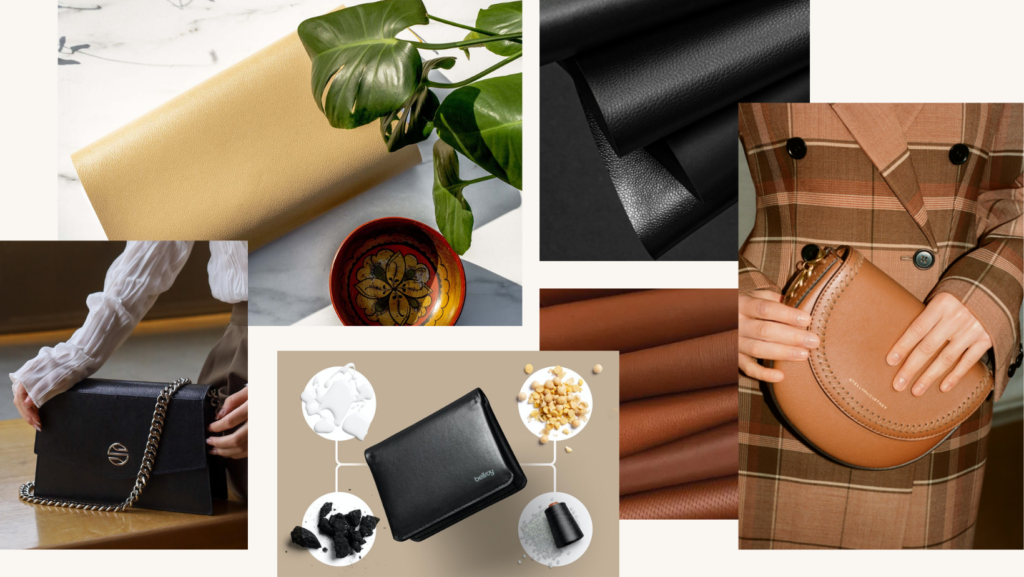
-Tactile neutrals-
In neutral and calm tones, contemporary classic neutral leathers and textiles with a minimalist feel and appearance are some of the trends that are here to stay. This includes the fact that it comes from traceable sources and uses low-impact tanning processes.
MIRUM® made from Natural Fiber Welding, for example, is a plant-based leather alternative that is 100% plastic-free and made in the United States. Pangaia, BMW, Allbirds, New Ballance, Stella McCartney, and Deckers are among the brands that have already used it. It is a high-performance solution for designers and brands looking to reduce their environmental impact while expanding their creative palettes.
MIRUM® can be recycled into new MIRUM® or shredded and safely returned to the earth at the end of its useful life – finally, a plastic-free and climate-friendly option. Furthermore, the MIRUM manufacturing process does not demand any additional water contributions beyond those found in the natural ingredients. This material is intended to meet nature’s highest circularity standards.
While ECCO Leather´s soft, supple leather is designed to be sweat-resistant for add up comfort. These materials are ideal for footwear, sneakers, accessories, watch straps, and other applications.
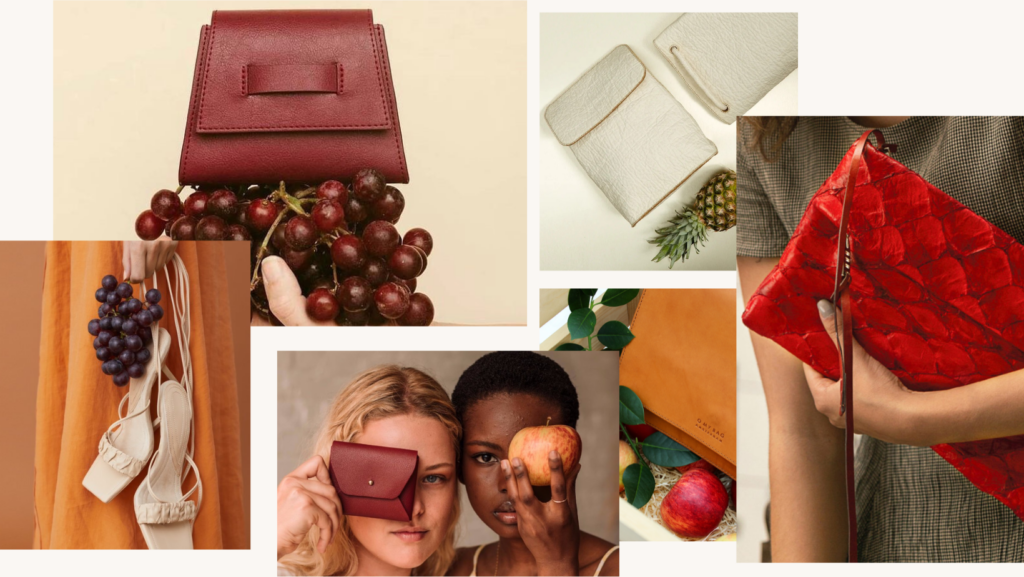
-Plant-based materials-
Leather-like plant materials continue to gain interest as eco-friendly alternatives that move towards easier recyclability and circularity…
These materials have been mainly used in footwear, sports shoes, bags, belts, and soft and small accessories.
The most notable ones include:
- beLEAF from Nova Kaeru (Brazil) with a distinctive marbled leaf texture. A truly vegan and 100% deforestation-free product, with characteristics similar to animal raw materials. Organic waste is composted and used as soil nutrients, helping to preserve the biome, wildlife, and waterways.
- Vegea (Italy): has developed a process for the revaluation of wine waste (grape remains) to produce beautiful skins.
- Frumat and Piñatex from Ananas Anam (Philippines) made of 80% pineapple leaf fiber and 20% PLA, are strong, light, and flexible, suitable for use in footwear, bags, furniture, and a wider application. It can be easily cut, sewn, embossed, and embroidered to achieve various design finishes.
Don’t you think it’s wonderful how you can take advantage of natural resources in a moderate and conscious way, combine it with creativity and obtain results like this new sustainable fashion?
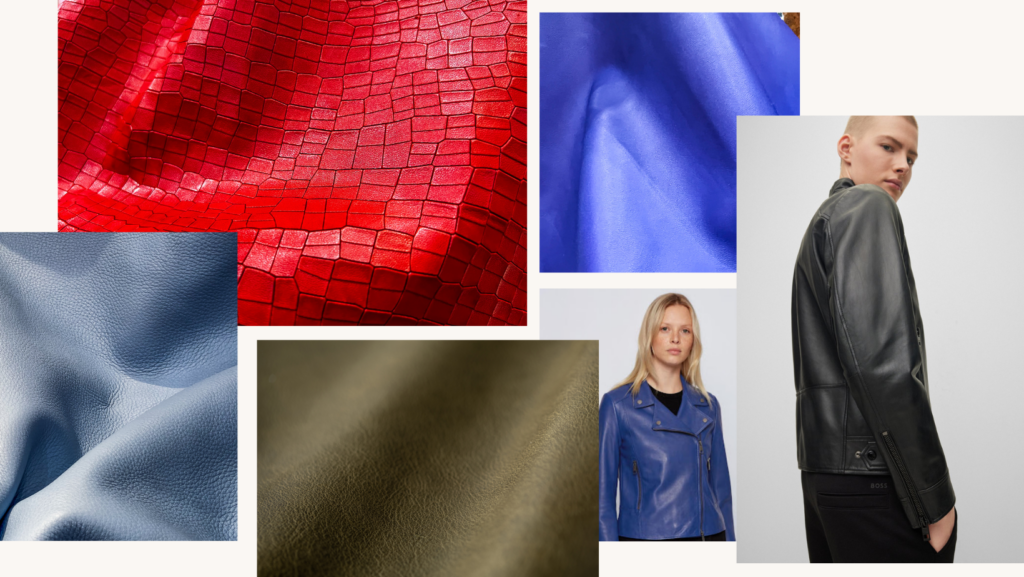
-Mid-shine leather-
Medium-gloss look leather is one of the new favorites. They should be of good quality, responsibly sourced, and dyed in colors that coordinate easily throughout the seasons. Producers of this leather type focus on reducing the harmful chemicals normally used, without losing that bright, mood-enhancing color that is so fashionable, especially after the pandemic.
An example of this is Olivenleder‘s Cradle to Cradle Certified Gold standard leather, tanned with an extract of olive leaves (Germany).
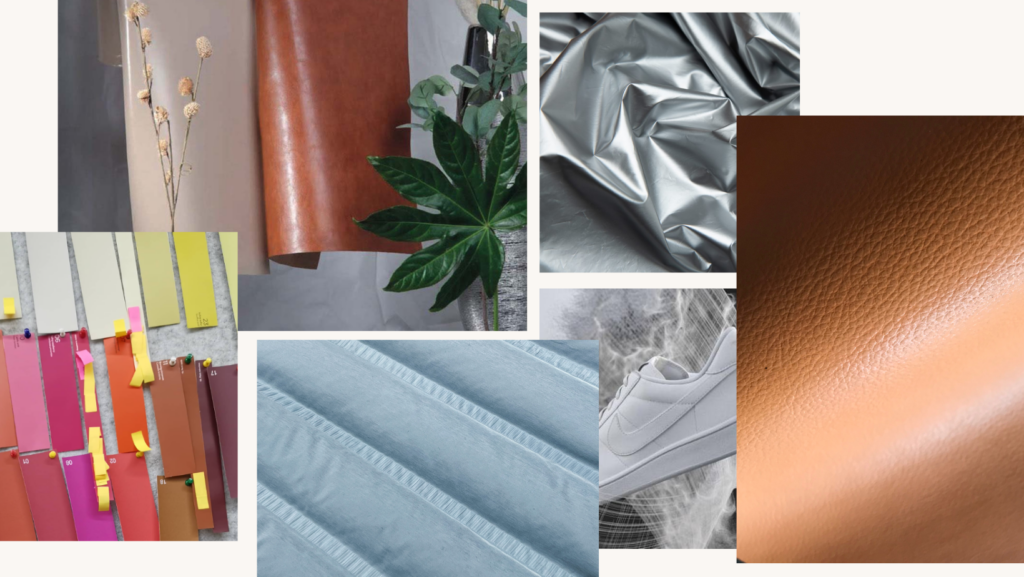
-Recycled materials-
Suppliers of these materials are using leather scraps and other pre- and post-recycled industrial waste materials to make new leather.
From Italy, Eredi Mezzabotta Maria material uses 50% recovered leather, 20% recycled polyester, 15% polyester, and 15% other fibers to make leather-like textiles, while Comerplast (Spain) and Recyctex (China) make materials from PET and recycled textiles.
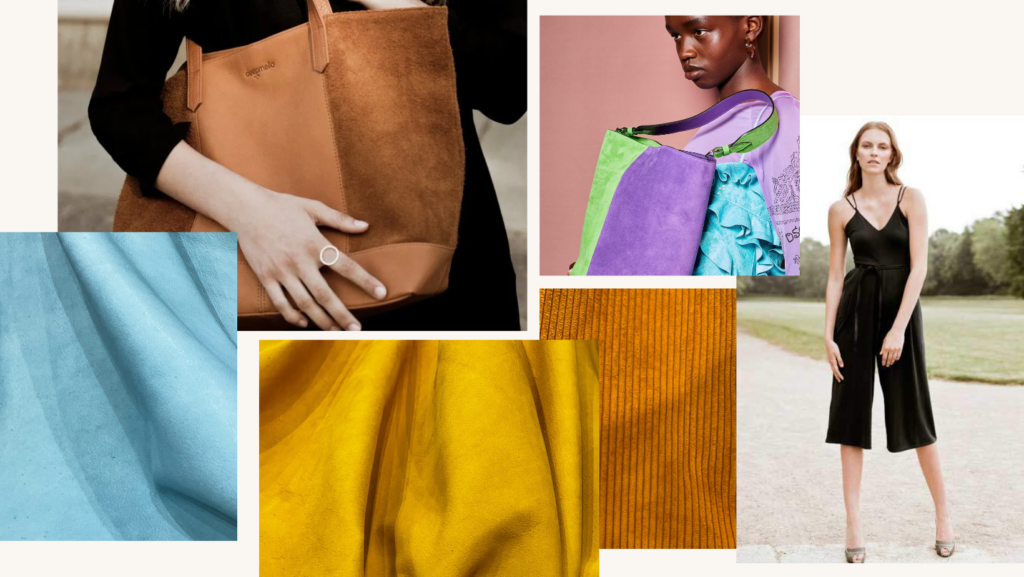
-Supple suede-
Short fur suede is also one of the classic and comfortable leathers. Soft, velvety leather adds a feel to footwear, retro sneakers, statement bags, and flexible fashion pieces.
I think many of us love to feel this textile in our garments. But are there sustainable alternatives to produce it? Although they have not been spread to a wide market, they exist, and they become more popular every time.
These textiles are currently used in bright pastel colors, warmer mid-century-inspired tan tones, and surprising pops of bright colors. The Deepmello Leather from Germany stands out. Their leathers are vegetable-tanned, with rhubarb root extracts forming sustainable chrome-free leathers.
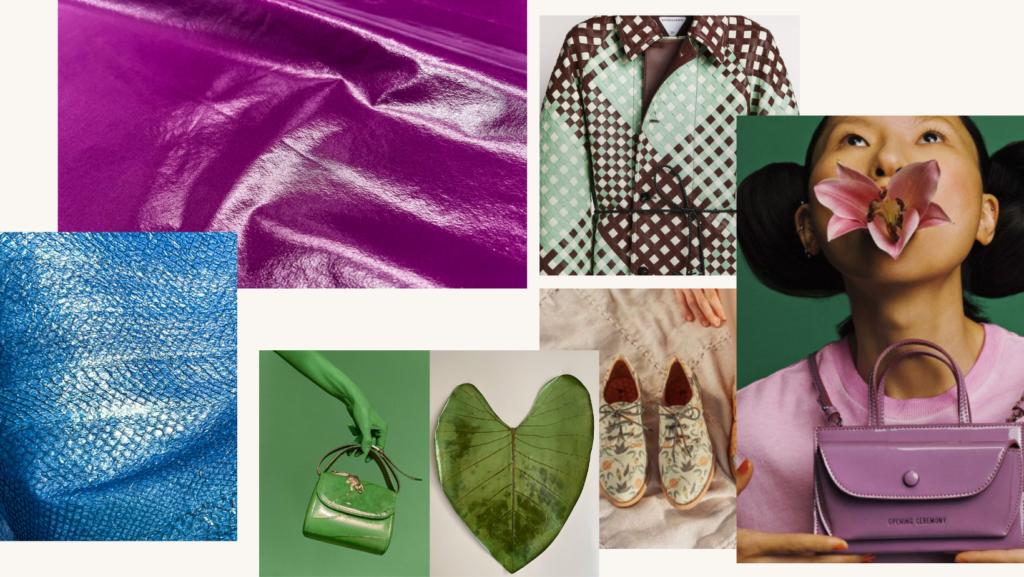
-Glossy sheen-
I think we have all noticed the increase in materials with a liquid finish, we are in the era of slime and glitter, and even children seem to love this type of material, so that same effect has been sought in leathers. They can be made from low-impact cellulose to achieve that ecological approach that we are looking for.
A standout is the shiny Pirarucu fish skin leather from Nova Kaeru (Brazil) and the shiny 100% recycled nylon PU Econyl, made from fishing nets from plastic waste and textiles from Leathertex (UK).
These alternatives will always fit you if you choose a vegan fashion style. Vegan and alternative products, like the ones we just discussed, are bringing about the first significant changes in the fashion industry that involve the use of leather. These materials all have a significantly smaller carbon footprint than conventional leather, making them very attractive and environmentally friendly.
However, there is still a dilemma. Many leather brands and companies say that it would be a waste not to use this material since it is a natural byproduct of the meat industry, on which an unimaginable number of jobs depend. So perhaps eradicating this industry is not the best option. As long as the meat industry exists, there will most likely be leather production.
As a very durable material that can fit into the “buy less, buy better” philosophy, leather proponents argue that it would be a waste not to use the leftover skins from the meat manufacturing process.
This can clearly generate a conflict, so we must consider the best option for us. When it comes to animal leather, the best way to consume is, as always, to inform yourself, since there are companies like Prime Asia and its Responsibly Raised initiative, which trace the path of the leather in its entirety, ensuring that the cattle had optimal conditions of life and that the tanning processes are free of chemicals.
There is no simple answer to this problem, so I encourage you to keep thinking about it and discuss it with your friends and family. After all, leather is still a vital and flexible material in the fashion business, providing durability, luxury, and timeless design.

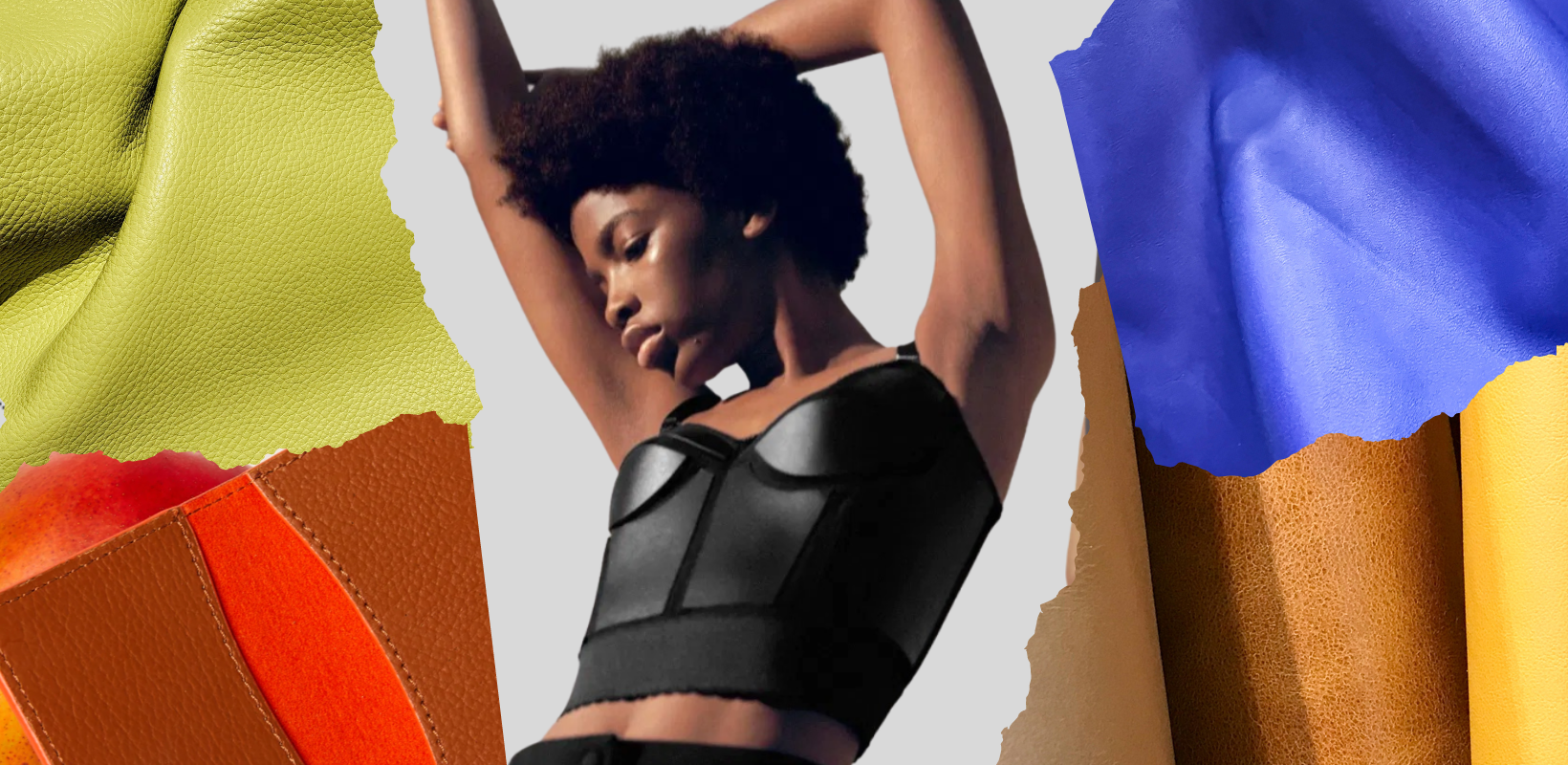


Leave a Reply